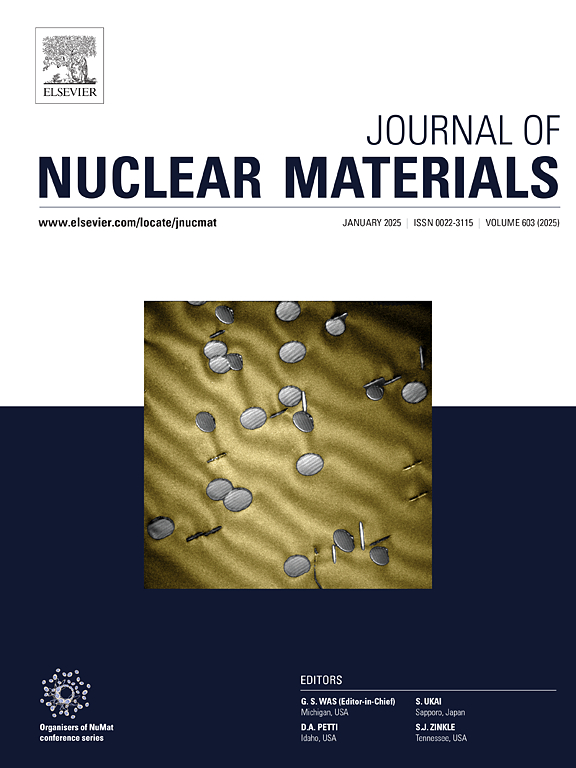Effects of He+ energy and W temperature on the initial W fuzz growth under the fusion-relevant He+ irradiation
IF 2.8
2区 工程技术
Q3 MATERIALS SCIENCE, MULTIDISCIPLINARY
引用次数: 0
Abstract
The growth of tungsten nanofuzz (W fuzz) induced by helium ions (He+) irradiation is a critical issue for fusion devices such as ITER. In our study, we investigated the behavior of tungsten (W) under helium ion (He+) irradiation, focusing on the conditions that promote the growth of tungsten fuzz (W fuzz). A comprehensive model was utilized to analyze the impact of varying He+ energies and W temperatures on the W fuzz formation and growth. It was found that W fuzz was formed in a low-energy range from ∼10 eV to 200 eV and a higher-energy range of >5 keV. W fuzz growth was facilitated below the He-W sputtering threshold energy while sputtering erosion became a significant hindrance just above this threshold. At He+ energies reaching hundreds of eV, W fuzz growth was entirely suppressed due to the enhanced sputtering erosion. However, at higher He+ energies around 5 keV, the He+ penetration reduced the impact of sputtering erosion, allowing He bubbles to grow in the deeper W layer. W temperature varying in the range of 1000 – 2000 K played a crucial role in forming He bubbles – induced tensile stress in the W surface layer, therefore affecting W fuzz growth which strongly depended on the He+ energy. These insights provided a detailed understanding of the energy-temperature relevance for W fuzz formation, which was crucial for predicting the performance and lifetime of W components in future fusion reactors.
求助全文
约1分钟内获得全文
求助全文
来源期刊

Journal of Nuclear Materials
工程技术-材料科学:综合
CiteScore
5.70
自引率
25.80%
发文量
601
审稿时长
63 days
期刊介绍:
The Journal of Nuclear Materials publishes high quality papers in materials research for nuclear applications, primarily fission reactors, fusion reactors, and similar environments including radiation areas of charged particle accelerators. Both original research and critical review papers covering experimental, theoretical, and computational aspects of either fundamental or applied nature are welcome.
The breadth of the field is such that a wide range of processes and properties in the field of materials science and engineering is of interest to the readership, spanning atom-scale processes, microstructures, thermodynamics, mechanical properties, physical properties, and corrosion, for example.
Topics covered by JNM
Fission reactor materials, including fuels, cladding, core structures, pressure vessels, coolant interactions with materials, moderator and control components, fission product behavior.
Materials aspects of the entire fuel cycle.
Materials aspects of the actinides and their compounds.
Performance of nuclear waste materials; materials aspects of the immobilization of wastes.
Fusion reactor materials, including first walls, blankets, insulators and magnets.
Neutron and charged particle radiation effects in materials, including defects, transmutations, microstructures, phase changes and macroscopic properties.
Interaction of plasmas, ion beams, electron beams and electromagnetic radiation with materials relevant to nuclear systems.
 求助内容:
求助内容: 应助结果提醒方式:
应助结果提醒方式:


